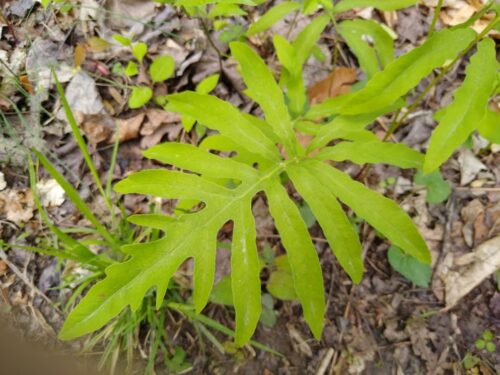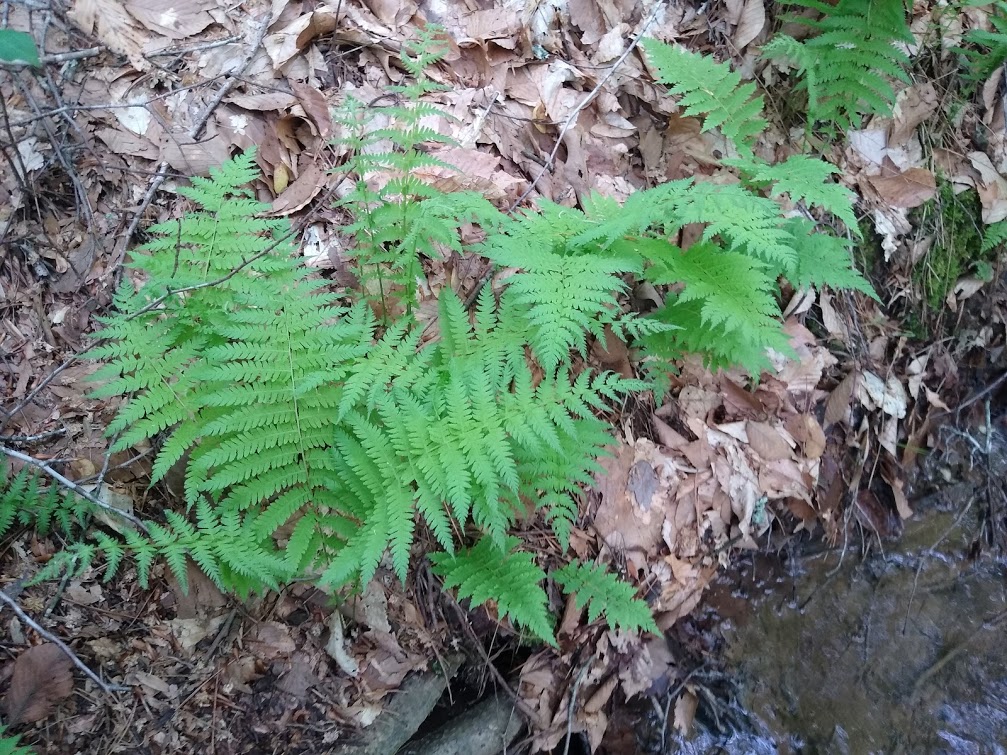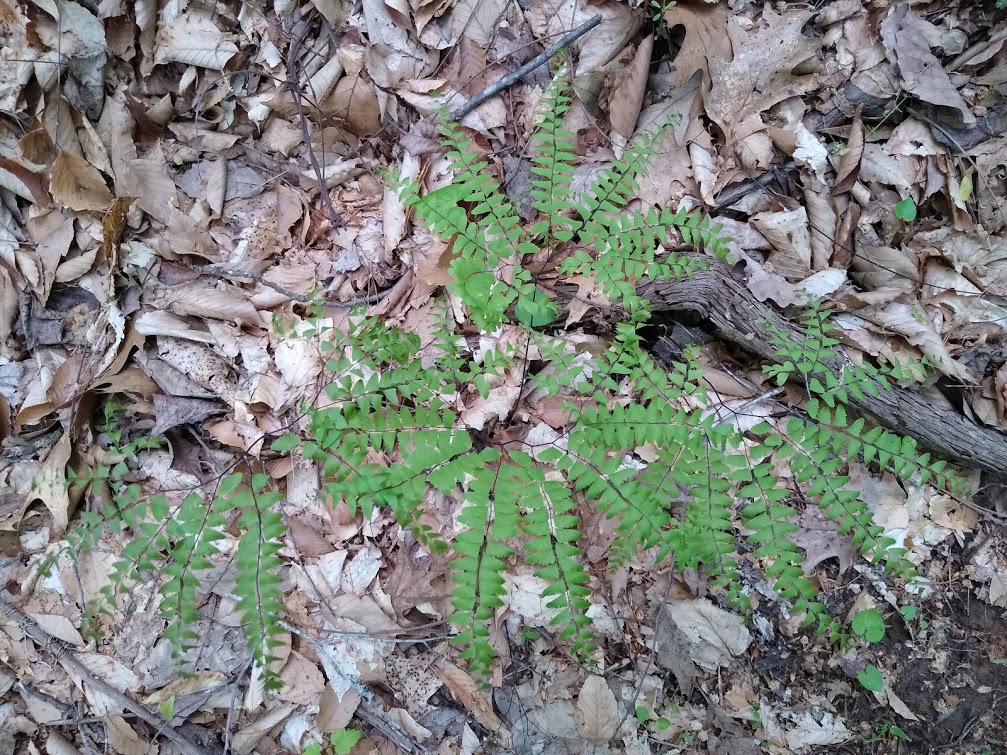Field Notes: Fantastic Ferns
May 15, 2020 12:58 pm

By Ellen Powell, Conservation Educator
Woodland walks in May are a study in fresh, vibrant green. Tree canopies have leafed out, shrubs and saplings fill the midstory, and underfoot, ferns and other ground covers sprawl across the leaf litter.

Lady fern (Athyrium asplenoides).
Ferns are not flowering plants; their reproduction is altogether different. They have a unique two-phase life cycle. The sporophyte form is the plant we recognize as a fern. It releases spores, which grow into tiny plantlets called gametophytes. These contain male and female organs and are capable of being fertilized in the presence of water. From a fertilized gametophyte, a new sporophyte grows, starting the cycle again.
Early last month, ferns were sending up new sporophyte shoots. You can see why they’re called fiddleheads! Now the shoots have unfurled, carpeting the forest floor with delicate fronds.
Some interesting Piedmont ferns include maidenhair fern (Adiantum pedatum), with fronds arranged in a circlet; lacy, dainty lady fern (Athyrium asplenoides), often found on stream banks; rattlesnake fern (Botrychium virginianum), with a stalk of clustered grapelike sporangia; sensitive fern (Onoclea sensibilis), with a simple leaf outline; ebony spleenwort (Asplenium platyneuron), with erect spikes of tiny leaflets on a black rachis; and the ubiquitous Christmas fern (Polystichum acrostichoides), with stocking-shaped leaflets.

Maidenhair fern (Adiantum pedatum).
—-
Featured photo at top of page shows a sensitive fern (Onoclea sensibilis).
Tags: Woodland Plants
Category: Education
